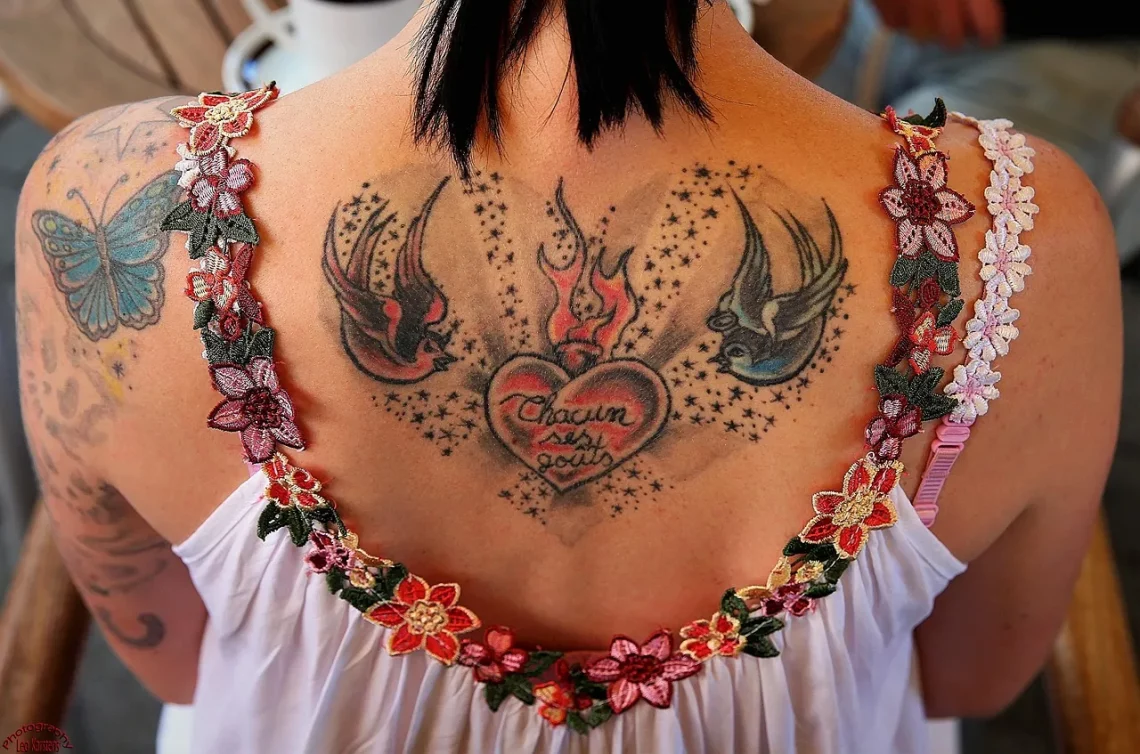
The Intriguing Connection Between Ozzy Osbourne and Tattoo Culture
The world of music and body art has always been intertwined, with numerous artists using tattoos as a form of personal expression and storytelling. Among these icons, few stand out as vividly as Ozzy Osbourne. Known as the “Prince of Darkness,” Ozzy’s life and career have been as colorful as the tattoos that adorn his body. His love for tattoos transcends mere aesthetics; they reflect his experiences, beliefs, and the tumultuous journey he has navigated throughout his life.
Tattoos have evolved from being symbols of rebellion to becoming mainstream art forms, and Ozzy Osbourne embodies this transformation. The stories behind his tattoos are as captivating as his music, revealing a deeper connection to the art form that many may overlook. As we delve into the relationship between Ozzy and tattoo culture, we discover not only the significance of his ink but also its broader implications in the realms of artistry, identity, and personal freedom. This exploration offers a unique lens through which we can understand the cultural significance of tattoos in the modern world and how figures like Ozzy Osbourne have contributed to this ongoing narrative.
Ozzy Osbourne: The Man Behind the Ink
Ozzy Osbourne’s journey is a remarkable tale of resilience, creativity, and transformation. Born in a working-class neighborhood, he faced numerous challenges that shaped his identity. From a young age, music served as an escape, and he quickly became a prominent figure in the heavy metal scene. His unique voice and theatrical stage presence captured the attention of fans and critics alike. However, it was not just his music that set him apart; it was his willingness to embrace the unconventional.
Tattoos have long been associated with rebellion, and for Ozzy, they symbolize his defiance against societal norms. Each tattoo tells a story, intricately woven into the fabric of his life experiences. For instance, his iconic bat tattoo represents a notorious incident during a concert, which has become a part of rock lore. This event, while shocking, highlights Ozzy’s commitment to pushing boundaries and challenging expectations.
Moreover, Ozzy’s tattoos are also a reflection of his personal struggles and triumphs. Throughout his life, he has faced addiction, mental health issues, and the complexities of fame. His ink serves as a visual representation of these battles, allowing him to externalize his internal struggles. Tattoos, in this sense, become a means of healing and self-acceptance, transforming pain into art.
As the tattoo culture gained popularity, particularly among musicians, Ozzy became a symbol of this shift. His willingness to showcase his tattoos in public and embrace the art form has inspired countless fans to explore their own identities through body art. The connection between Ozzy Osbourne and tattoo culture is not merely one of aesthetics; it is a profound relationship that speaks to the heart of what it means to be an artist and an individual.
The Evolution of Tattoo Culture in Music
The relationship between music and tattoo culture has evolved significantly over the decades. In the past, tattoos were often associated with sailors, criminals, and outcasts, but this perception has changed dramatically. As music genres like rock, punk, and hip-hop emerged, tattoos became a means of self-expression for artists and fans alike.
Ozzy Osbourne’s influence on this cultural shift cannot be overstated. As one of the pioneers of heavy metal, his tattoos became symbols of rebellion and individuality. Artists began to adopt body art as a way to convey their unique identities and to connect with their audiences on a deeper level. Tattoos became a visual language, allowing musicians to express their beliefs, emotions, and experiences in ways that words alone could not capture.
This evolution is particularly evident in the way tattoos are perceived today. Once seen as taboo, they are now celebrated as an essential aspect of personal identity. Many contemporary musicians proudly display their ink, using it as a canvas to tell their stories. Ozzy’s legacy has played a crucial role in normalizing tattoos within the music industry, paving the way for a new generation of artists who embrace body art as part of their creative expression.
Furthermore, the rise of social media has amplified the visibility of tattoos within the music scene. Platforms like Instagram allow artists to showcase their tattoos and connect with fans, fostering a sense of community. This digital space has also facilitated collaborations between tattoo artists and musicians, blurring the lines between music and visual art. As a result, tattoos have become an integral part of the music landscape, allowing for cross-pollination between different art forms.
In this modern context, Ozzy Osbourne serves as a reminder of the power of self-expression through tattoos. His journey reflects the broader societal acceptance of body art, highlighting how tattoos can serve as a form of empowerment and identity. As tattoo culture continues to evolve, the influence of artists like Ozzy remains a vital part of this narrative.
The Symbolism Behind Ozzy’s Tattoos
Ozzy Osbourne’s tattoos are not merely decorative; they are laden with meaning and symbolism. Each piece of ink tells a story, representing significant moments in his life, his beliefs, and his artistic journey. Understanding the symbolism behind his tattoos offers a glimpse into the mind of a man who has navigated the complexities of fame and personal struggles.
One of Ozzy’s most recognizable tattoos is the image of a bat, which holds a special place in rock history. This tattoo represents a notorious incident during a concert when Ozzy famously bit the head off a bat, believing it to be a prop. While this act shocked many, it also encapsulated his persona as the “Prince of Darkness.” The bat tattoo symbolizes not only a pivotal moment in his career but also his willingness to embrace the outrageous and the macabre, characteristics that have become synonymous with his music.
Another significant tattoo is the “Ozzy” script inked on his forearm. This piece represents not only his identity as a musician but also his personal journey. It serves as a constant reminder of his roots, his struggles, and his triumphs. The script tattoo is emblematic of how Ozzy has embraced his identity and transformed his life experiences into art.
Moreover, Ozzy’s tattoos often feature religious and mythological imagery, reflecting his fascination with spirituality and the darker aspects of life. These symbols highlight his complex relationship with faith, as well as his exploration of existential themes within his music. Tattoos become a medium through which he can express his inner thoughts and beliefs, inviting fans to engage with his narrative on a deeper level.
In essence, the symbolism behind Ozzy Osbourne’s tattoos transcends mere decoration. Each piece serves as a chapter in his life story, offering insight into his identity as an artist and as an individual. By embracing this form of expression, Ozzy not only celebrates his own journey but also inspires others to explore their stories through body art.
Impact on Fans and the Tattoo Community
Ozzy Osbourne’s influence extends far beyond the realm of music; it has permeated tattoo culture and inspired countless fans to embrace body art as a form of self-expression. His boldness in showcasing his tattoos has encouraged individuals to explore their identities, often using ink to tell their stories.
The connection between Ozzy and his fans is profound. Many fans view him as more than just a musician; he represents a lifestyle and an attitude of defiance against societal norms. For these fans, getting a tattoo inspired by Ozzy is not just about the art itself; it is a way to connect with a larger community that shares similar values of individuality and freedom. This sense of belonging is particularly significant in a world where many people struggle to find their place.
The tattoo community has embraced Ozzy Osbourne as a cultural icon, often celebrating his contributions through tattoo conventions, fan art, and tributes. Tattoo artists frequently cite him as a source of inspiration, incorporating elements from his imagery into their work. This cross-pollination between music and tattoo culture fosters a vibrant community where artists and fans collaborate to create meaningful art.
Furthermore, Ozzy’s candidness about his struggles with mental health and addiction has resonated deeply with fans. Many individuals use tattoos as a form of therapy, finding solace in the ink that adorns their bodies. By sharing his journey, Ozzy has empowered others to embrace their own battles and express their experiences through body art. This shared understanding creates a bond among fans, reinforcing the idea that tattoos can serve as a powerful tool for healing and self-acceptance.
In summary, Ozzy Osbourne’s impact on tattoo culture is significant and multifaceted. His willingness to embrace body art has inspired fans to explore their identities and connect with a larger community. As the tattoo culture continues to evolve, Ozzy’s legacy as a cultural icon remains a vital part of this narrative, illustrating the profound connection between music, art, and personal expression.
In conclusion, the intriguing connection between Ozzy Osbourne and tattoo culture reflects not only his personal journey but also the broader societal acceptance of body art as a form of self-expression. Through his tattoos, Ozzy has conveyed his experiences, beliefs, and identity, inspiring countless fans to embrace their own stories through ink. This exploration highlights the transformative power of tattoos, revealing their significance in the realms of artistry, identity, and community.
Disclaimer: This article is intended for informational purposes only and should not be considered medical advice. For any health-related concerns, please consult a qualified healthcare professional.




